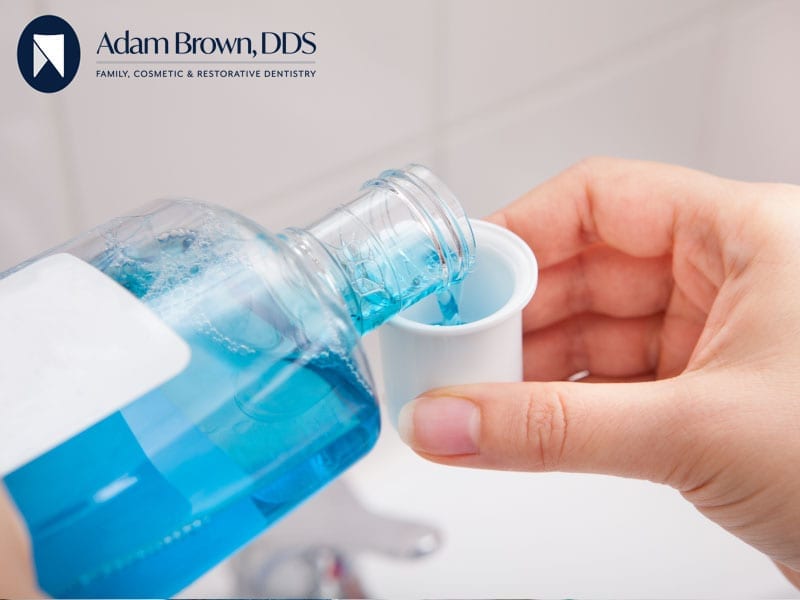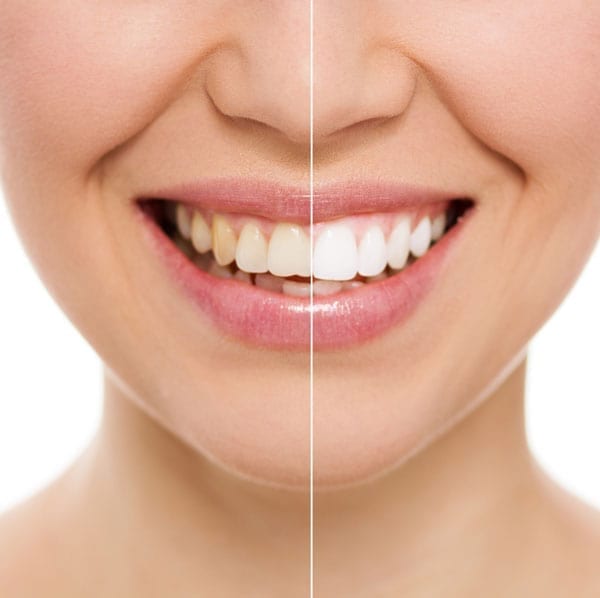The Hidden Dangers of Mouthwash: What You Need to Know
Mouthwash is often touted as a safe and effective method for curing bad breath and improving overall oral health. But recent studies show that not all mouthwashes are created equal. Before you add a mouthwash to your daily dental regimen, take a minute to understand some of the potential dangers that might be hiding in that morning and evening routine.

The Problems with Conventional Mouthwash
While advertising may state that conventional mouthwash kills 99.9% of all bacteria, that’s not always the full dental story. Many conventional types of mouthwash contain up to a 26% alcohol content in addition to other dangerous ingredients. When you swish mouthwash twice a day in your mouth for an extended period of time, a number of things occur.
- Alcohol destroys the friendly bacteria your body needs to maintain normal blood pressure and positive oral health. Think of it like an antibiotic for your mouth. It doesn’t distinguish between good and bad oral bacteria, it simply kills it all.
- Conventional mouthwash dries out your mouth and affects saliva production. This can actually result in worsened breath over time in addition to increased cavity production because saliva acts as a natural barrier for both of these dental conditions.
- Recent studies have shown that using conventional mouthwash may potentially lead to high blood pressure issues because of disruption with the body’s production of NO (Nitric Oxide), a molecule inside the body that helps to regulate blood pressure.
A sample of ingredients that are the biggest culprits for these dental issues include alcohol (associated with drying your mouth and killing bacteria), Chlorine Dioxide (used as a bleaching agent to whiten teeth), Chlorhexidine (an antiseptic that is also an allergen), and formaldehyde (dangers include cancer risk and respiratory problems).
Discovering Natural Mouthwash Alternatives
There are several natural mouthwash alternatives available over the counter that provide a safer option for those that want to maintain their daily swishing regimen. A few choices are listed below.
- The Natural Dentist
This mouthwash can be found at most major retailers and is tailored towards those with sensitive teeth and gums. The ingredients are all natural and contain 20% Aloe Vera which is a natural antiseptic that replaces conventional use of Chlorhexidine without the side effects. - Therabreath
This mouthwash is also available at most major retailers and helps increase saliva production instead of drying out your mouth. It also uses natural ingredients including aloe vera and tea tree oil which is another natural antiseptic used to aid in overall oral health. - Oral Essentials
Created by dentists and thoroughly tested, this mouthwash contains sea salt to help maintain the healthy mineral balance in your mouth. In addition, you’ll find such natural ingredients as aloe vera, coconut oil (a natural teeth whitener), and essential oils (aids in freshening breath). This mouthwash can be found on Amazon in addition to other online retailers.
Do-It-Yourself Mouthwash? Why not!
A quick search on the internet for do-it-yourself mouthwash will yield plenty of recipes for you to experiment with. When wading through the never-ending list of oral options, keep a few essential ingredients in mind.
- Aloe Vera
As mentioned above, Aloe Vera is a top-notch replacement for the conventional mouthwash ingredient, Chlorhexidine. Studies have shown that it is equally as effective as an antiseptic but without all the harmful side effects. - Essential Oils
Essential Oils are a natural way to freshen breath without the drying effect of alcohol. They also contain antibacterial properties and oils such as lemon contain whitening properties to help keep your teeth shiny and bright. - Sea Salt and Baking Soda
Both these ingredients have strong benefits for oral health. Used as mouthwash ingredients, sea salt will help to restore the mineral balance of your mouth while baking soda will help to ease gingivitis and whiten teeth.
Final Thoughts on Mouthwash
Studies show that conventional mouthwashes are not as effective or as safe as typically advertised. They can contribute to dry mouth, mess with the balance of bacteria in your mouth and even cause increased gingivitis and cavity formation. The best way to keep your dental health in tip-top shape is to work on the problem from the inside out. Keep a balanced diet and stay away from processed foods and sugars. If you still want to make mouthwash a regular part of your dental routine, stick with all natural brands or create your own recipe so that you are in control of the ingredients going into your mouth and body. For more information, please contact Carolina’s Dental Choice.



